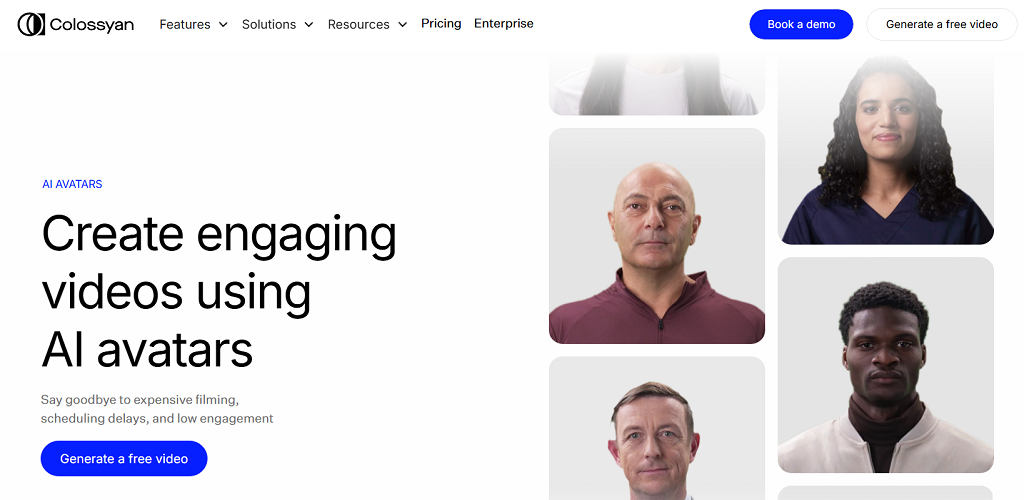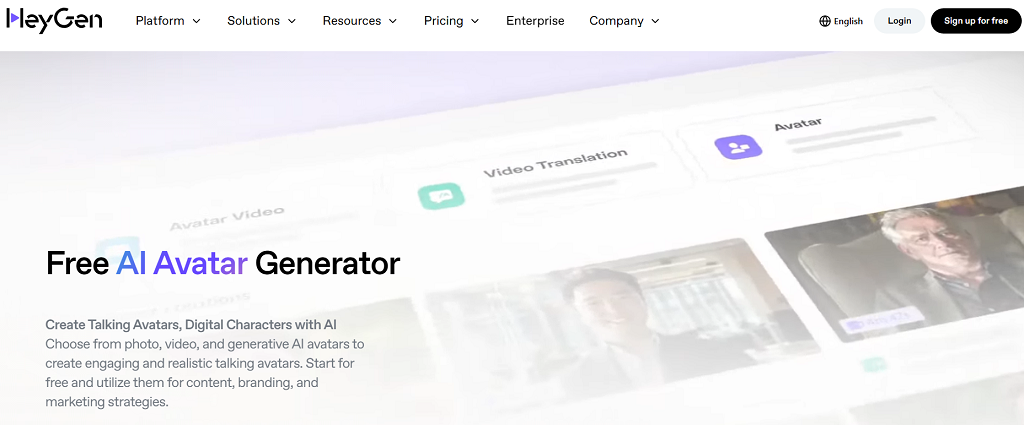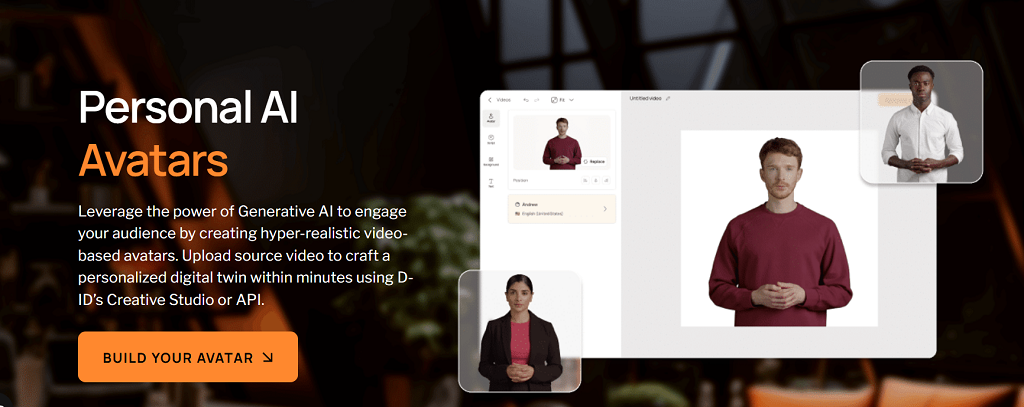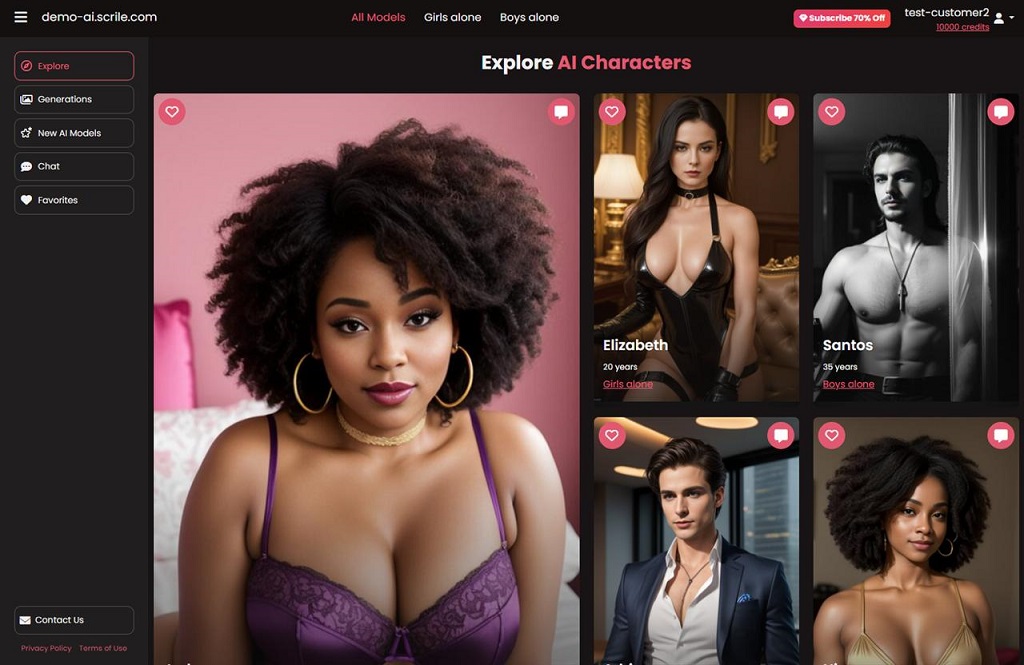Digital identities are everywhere now — in gaming worlds, on social media, inside virtual classrooms, and even in adult streaming. They’re no longer side projects or novelties. For many people, these avatars are how they connect, entertain, and make money.
So, what is an AI avatar? Think of it as a computer-generated character designed to look and act human. It can speak in natural voices, mirror expressions, and hold conversations that feel real enough to build trust. Some are used in education, some in customer service, and plenty are already thriving in the adult industry where personalization and privacy matter most.
The appeal is obvious: avatars are cheaper than hiring live actors, always available, and easy to scale across platforms. In this article, we’ll explore the benefits, real use cases, and highlight five of the best AI avatar software tools worth knowing in 2025.
What Is an AI Avatar?

At its core, an AI avatar is a computer-generated human. Not a cartoon, not a static profile picture, but a figure that can move, talk, and even react in a way that feels natural. The realism comes from the tech behind it: speech models that create convincing voices, computer vision systems that animate facial expressions, and rendering engines that sync mouth movements with dialogue. Together, they produce the illusion of a lifelike digital character.
The machinery under the hood usually blends:
- Natural Language Processing (NLP): so the avatar can understand input and reply.
- Computer vision: for lip-sync, gestures, and expressions.
- Text-to-video synthesis: turning a script into a talking, moving persona.
That combination makes an avatar more than a skin on a chatbot. It creates presence. You’re not just reading a line of text back from an AI — you’re watching “someone” deliver it. This is why what is an AI avatar has become a real question for businesses, creators, and adult platforms alike. The technology has evolved enough that interacting with these digital humans feels less like software, and more like meeting a character built for you.
Benefits of AI Avatars

One of the biggest draws of AI avatars is how quickly they can mold themselves to whoever is watching. They don’t have a single script or fixed persona — the same avatar can crack a joke with one person, act professional with another, and switch into flirt mode in an adult chat without missing a beat. That level of personalization is something even real performers struggle to scale.
Another benefit is their stamina. No sleep, no breaks, no time zones. An avatar can be online around the clock, serving customers, entertaining fans, or running a pay-per-view show at three in the morning. For creators, this opens the door to global audiences instead of being tied to a personal schedule.
Money is another angle. Instead of hiring actors, streamers, or models, businesses can rely on avatars that work for a fraction of the cost while still creating engaging experiences. And in the adult space, they’ve already proven themselves as money-makers through subscription tiers, one-off tips, and premium requests.
To sum it up, the perks look like this:
- Personalized interaction that adapts to the user.
- Always on — no downtime or fatigue.
- Cheaper to run than real performers.
- Built-in monetization hooks from subs to pay-per-view.
These advantages explain why so many industries are taking avatars seriously.
Best Use Cases for AI Avatars
So, what is an AI avatar really good for? The short answer is: almost anything that involves people paying attention to a screen. The long answer is a growing list of use cases that’s expanding every year as the tech gets sharper.
- Entertainment and gaming: NPCs that feel alive, characters who remember your progress, storylines that adapt.
- Adult industry: porn avatars that perform custom scenes, chat-based companions that never log off, and NSFW roleplay that gives privacy without losing intimacy.
- Influencers: virtual doubles that post while the real person sleeps, avatars that can speak multiple languages for global reach, or digital clones that handle fan engagement at scale.
- Education and training: tutors who can demonstrate tasks on demand, corporate avatars that lead onboarding sessions, or language-learning partners who never get tired of your mistakes.
- Business and enterprise: customer service avatars for 24/7 support, branded mascots that replace generic chatbots, interactive guides inside apps or websites.
- Healthcare: therapy companions for mental health check-ins, virtual nurses reminding patients to take meds.
- Events: hosts for conferences or adult cam sites, moderators that keep digital spaces running smoothly.
The list keeps growing because avatars aren’t bound to a single role. Once the character is built, it can shift across industries without new training or added cost — one of the reasons adoption is spreading so fast.
Top 5 AI Avatar Software in 2025
Colossyan

Colossyan built its reputation in the corporate world, but its technology is versatile enough to cross into other spaces. At its core, it’s a text-to-video tool: you write a script, pick an avatar, and the platform produces a professional-looking video with a digital presenter. For training departments, this removes the cost of hiring actors or booking video shoots. The avatars look realistic, and the lip sync is convincing enough that most viewers won’t question whether they’re watching a person or an AI-driven model.
Pros: realistic visuals, simple workflow, strong use for corporate learning and tutorials.
Cons: avatar variety is limited, and customization options can feel restrictive for creators outside the training niche.
Synthesia
Synthesia is one of the most well-known names in the AI avatar space. It’s become a go-to for marketers, educators, and even independent creators who want polished videos without needing production teams. The library of avatars is large, and you can even create custom avatars that look like you — a feature that appeals to influencers and businesses alike. The platform supports dozens of languages, making it useful for global brands or creators with international audiences.
Pros: wide avatar selection, strong customization, multilingual support.
Cons: pricing can be high for heavy users, and some avatars still look a little “uncanny” in emotional scenes.
HeyGen

HeyGen feels less like a stiff corporate tool and more like a playground for creators. You can spin up avatars that sell products, narrate social videos, or even test adult-friendly concepts in a safe space. The software leans heavily on flexibility — you’re not stuck with one format. Marketing teams can drop an avatar into promo videos, while independent creators experiment with edgier or NSFW ideas without risking their own face on camera. The editing workflow is smoother than most: drag, drop, adjust, render.
Pros: creative freedom, good balance between pro use and casual creators, NSFW-friendly flexibility.
Cons: still maturing compared to giants like Synthesia, occasional quirks in lip sync.
Replika
Replika takes avatars in a different direction. Instead of polished corporate presenters, it focuses on companionship and conversation. You design an avatar, chat with it, and over time it learns your habits. For some, it’s a wellness tool; for others, it slides into emotional support or even intimate territory. It’s one of the few services where people form genuine attachments to their avatars, sometimes stronger than with real contacts. That mix of empathy and persistence is its unique edge.
Pros: strong conversational depth, personalized interactions, emotionally engaging.
Cons: limited to chat and light roleplay, not built for polished video production.
D-ID

D-ID is best known for turning still images into moving, talking avatars. Upload a portrait, feed it text or audio, and suddenly the image starts speaking with realistic lip sync. For history projects, marketing campaigns, or even adult-themed photo-to-video experiments, it opens doors without needing a live performer. The tool is simple to use but surprisingly effective at creating a sense of presence from nothing more than a headshot.
Pros: quick results, unique “photo to video” capability, easy to learn.
Cons: mostly limited to head-and-shoulder avatars, output can look repetitive if pushed too far.
Why Scrile AI Stands Out

Most of the tools we’ve covered so far are ready-made platforms. They’re great for quick use but come with limits: you rent space, you follow someone else’s rules, and you give up a slice of revenue. Scrile AI goes in a different direction. It isn’t a platform — it’s a development service that lets you build an AI avatar business on your own terms.
The biggest difference is ownership. With Scrile AI, the product wears your brand, not theirs. You control the domain, the design, and the interface. That means your audience sees your name, your colors, and your style — not another company’s watermark.
What Scrile AI provides out of the box is impressive:
- Avatar builder that lets you create characters with unique looks and personalities.
- Integration with leading LLMs (GPT, Claude, Gemini), so your avatars can chat, roleplay, or run scripts.
- Adult-friendly features that make NSFW use cases not only possible but polished.
- Flexible monetization — subscriptions, pay-per-chat, tipping, and bundles.
For anyone asking what is an AI avatar in the context of business, Scrile AI is the answer that goes beyond experiments. Instead of being locked into a SaaS plan with fixed options, you get a system that adapts to your goals. That flexibility makes it valuable for startups chasing new niches, creators looking to launch adult-focused services, or enterprises that want to add avatars without handing over revenue to a third party.
Scrile AI doesn’t just hand you a tool. It hands you the keys to an entire ecosystem that’s yours to scale.
Conclusion
Avatars have moved from curiosity to everyday tools. They’re shaping how people learn, play, work, and even build intimacy online. The five software picks we looked at each serve a purpose — from text-to-video production to companionship apps — and they show just how wide the field has become. But none of them hand over full control.
That’s where Scrile AI changes the picture. Instead of renting space on someone else’s platform, you get the chance to build your own. Your brand, your design, your rules. For businesses and creators who want to turn avatars into a real venture, that kind of ownership is the edge that matters.
If you’re ready to explore what’s possible, reach out to the Scrile AI team. They’ll help you create something that isn’t just another tool, but a system designed around your goals.

Polina Yan is a Technical Writer and Product Marketing Manager, specializing in helping creators launch personalized content monetization platforms. With over five years of experience writing and promoting content, Polina covers topics such as content monetization, social media strategies, digital marketing, and online business in adult industry. Her work empowers online entrepreneurs and creators to navigate the digital world with confidence and achieve their goals.

